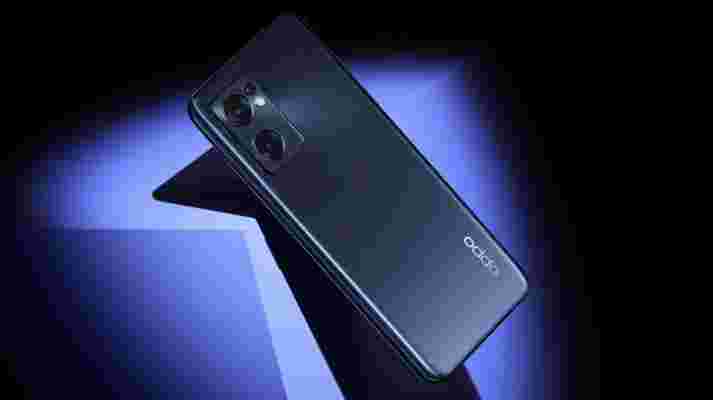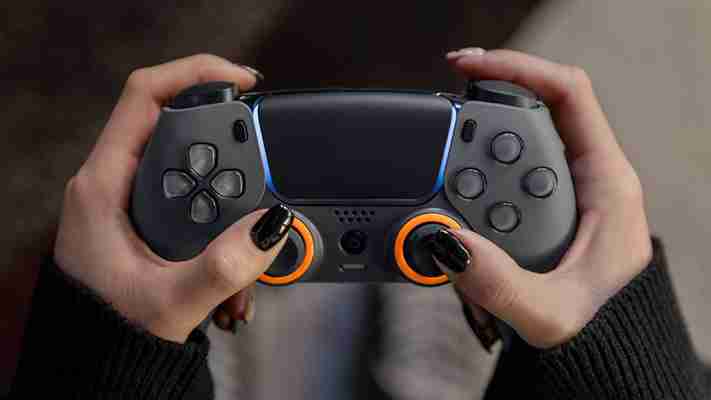
In any other month, the news of a new iPhone would likely dominate the airwaves for weeks on end. That's not the case with the iPhone SE 3 (2022) though - in fact, just a week after its unveiling, it's already decidedly old news.
It's a bad month to be an Apple fan, that's for sure - even though the month kicked off with gadgets from the company, we've been distracted by a deluge of newer (and more interesting) products. Now, we've already deleted the iPhone SE 3 and iPad Air 5 from our minds, because leaks and rumors suggest there are some way more interesting gadgets coming in March.
In fact, even though the iPhone SE 3 isn't even available to buy yet, we're already getting excited by its more interesting rivals (we've also been ignoring pleas from our editor to do more iPhone coverage, oops). Like these phones:
Xiaomi 12 series

A week after the Apple event, the Xiaomi 12 series launched - this is the newest flagship phone from Chinese tech company Xiaomi. If you haven't heard of them - well, according to Counterpoint stats they spent all of 2021 jostling with Apple for the #2 spot in the market in terms of market share, and were even beating Apple for sales for a good portion of the year.
We thought these new phones wouldn't really rival the iPhone SE 3, since the Xiaomi 12 and the flashy Xiaomi 12 Pro are more premium offerings - but that was before the Xiaomi 12X was announced alongside them.
This, essentially, is a slightly-pared down version of the 12, with a more affordable price tag. In terms of price, it's a touch pricier than the iPhone still, but you get a lot more for your money - and in regions like the UK, which is massively disadvantaged by the pricing conversions that Apple opts for, it could end up a much better device.
Samsung Galaxy A launch
If you want to talk about direct rivals to the iPhone SE 3, we can talk about Samsung's Galaxy A series... and wouldn't-ya-know, but there's a launch for some new ones of these on March 17.
We don't officially know what's coming on this date, but a leak recently laid bare the upcoming Galaxy A53 , and it looks so much more tempting for budget buyers than the iPhone.
This reportedly has a big, bright screen, a chunky battery, four impressive-sounding cameras and, if the price conversion is to be believed, a price that significantly undercuts the iPhone. Plus, it doesn't have a design so old that your grandparents would recognize it from their childhood.
But there's more!

Crickey, March is a busy month for phone fans.
Realme has confirmed that its GT Neo 3 is debuting on March 22. This will likely be the same price as, or a little bit more affordable than, the iPhone. We know it'll have a vibrant design inspired by racing cars, and 150W charging. Nope, that's not a typo, its charging is a tiny bit faster than the iPhone's 18W.
On March 23 we're hearing the first information about the Nothing Phone , the first smartphone from brand-new tech company Nothing which was created last year by an ex-OnePlus founder. We've got no idea if this will be mid-range like the iPhone, or a budget or premium handset, but we do like a good mystery.
The next day is when the Oppo Find X5 series goes on sale - we've tested the Find X5 Pro , but the real iPhone SE (2022) competitor is the Find X5 Lite with its three cameras, bigger screen, 65W fast charging and (likely) lower price.
We also know the OnePlus 10 Pro is going on sale by the end of March, but this isn't exactly an iPhone rival, as it'll likely cost at least twice as much as the new SE. We just thought we should list it so phone fans are aware.
whoPhone?
The new iPhone has the same design, cameras and charging as its predecessor - and even that 2020 model was horribly dated. The limited improvements - a new chipset and 5G - will only be useful to a really select group of people, and we'd argue that the average consumer won't feel the benefits of them.
Plus, the price has seen an increase from the SE 2. It's just bad value for money.
All in all, it's a 'nothing' phone (not a Nothing Phone, we mean a phone that has nothing to like).
With such a busy month, full of interesting mobile innovations like Realme's 150W charging, OnePlus and Oppo's Hasselblad camera features and the giant enigma that is Nothing, it's hard to stay focused on the iPhone SE 3. In fact, like this article suggests, I simply haven't been.
I'm looking forward to not writing the words 'iPhone SE 3' for a while, while I focus on more interesting and quirky Android devices. And if I do have to write about the device, I hope it's a news story about Apple admitting that it accidentally aired the wrong live stream, and actually does have an interesting SE 3 coming. But that seems unlikely.
Two Point Campus is a happy-go-lucky management sim with an art style straight out of a Dreamworks animation. It’s a light-hearted strategy game that charges you with developing a thriving university full to the brim with colorful characters, tongue-in-cheek classes, and wide-eyed students.
But for me, it’s an exercise in miserly ambition. After spending a couple of hours with Two Point Campus’s introductory level and first main mission, my lust for exploitative working practices knows no bounds. My addiction to unscrupulous business management is uncaged. I’m ready to unleash all my parsimonious guile on the poor students and staff that have the misfortune of populating this digital university.
Two Point Campus might look like a management sim as cheery as the grins of the characters on its cover art, but there’s a black hole at the center of this market simulator. And it does terrible things to a person.
A familiar face

If you’ve played Two Point Hospital – or dipped your toe into classics like Theme Park World, Theme Hospital, or Roller Coaster Tycoon – this sequel will be familiar. In Two Point Campus, you’re handed the grounds of a burgeoning university to grow into an academic powerhouse.
That mainly involves designing the architectural interiors of buildings by constructing classrooms, lecture halls, and accommodation for incoming students. You need to kit out each room with the necessary teaching equipment, all while hiring staff and rolling out additional courses to entice potential enrollees. You have to build more than just classrooms for your students to thrive (by which I mean continue to pay their extortionate fees): they need libraries to exercise their aspiring minds, and places to socialize, too, such as a lounge where they can practice their pick-up game.
You can’t just go creating whatever university you want; there are rules to follow and expectations to manage. In the missions I played, the main objective throughout was to raise and maintain the grades of my enrolled students. Upgrading the academic facilities of your university is the most direct means of achieving that, whether by hiring more competent staff or doling out a bit more cash to the library for some fancy new computer desks.
But students aren’t customers, and their academic achievements are tied to their social surroundings. It's no good creating an illustrious lecture hall kitted out with trailblazing tech if the students who use it are sleeping in cramped rooms with nothing but a single potted plant for comfort. You’ll need to provide them with all the bells and whistles of a Hollywood uni experience if they’re to stay happy. If you don’t, they might leave, taking their precious tuition fees with them.
Balancing act

That serves as an elegant way of tying Two Point Campus’s simulation mechanics to its more artistic design elements. Whereas a lot of management sims include visual customization options that amount to little more than aesthetic options, Two Point Campus bakes them into its win conditions, which often include raising the academic scores of a cohort.
For a smooth-running campus, you’ll need to dot food outlets around the place, make room for student societies to hang out, and fill the student’s union with enough arcade machines to keep everyone happy. Students also love a flower bed, which is a convenient excuse to play architectural dress-up
That may sound utopian to you, but to me it sounds pricey. Call me Scrooge, but I am the type of university administrator to pack twenty students to a room and give them a single potted plant for comfort. I like nothing more than seeing just how far I can push my students and staff before they reach their breaking point, carefully selling off (supposedly) essential university assets and providing meager teaching facilities to inflate my coffers
I sold off all the university’s food outlets to save on hiring costs, replacing every coffee shop and burger van with a vending machine. I fired swathes of my already underpaid janitorial staff to replace them with rubbish bins, hoping the good nature of my students would keep the campus clean (it didn’t but they can live in their own mess.) I downsized personal tutor rooms to one-meter-square tuition boxes, how much space can one-on-one teaching need?
My cost-cutting didn’t exactly pay off. The immediate savings didn’t translate into sustained profit, as my ailing campus struggled to attract new students. It’s not easy to run a functioning school while gutting it from the inside. But that just makes things more enjoyable. There’s a challenge in trying to be as miserly as possible and still have a successful university. Like setting a trap, but not wanting to waste too much money on the bait.
Cribbing results

My quest for unfettered profit did highlight some weaknesses in Two Point Campus. There are some hacky methods to bump student happiness, like throwing a big end-of-term party. Events provide enough of a happiness buff to carry students through the rest of the year no matter how dire the campus is. Plus, you can keep professors from quitting by stuffing staff lounges with an unrealistic number of cheap plant pots. Those might actually be realistic measures, but they did feel like I was cheating the game rather than playing how the devs would want me to.
But these are minor quibbles. Designing your campus with exciting new decorations and features is so quick and easy, my desire for inflated profits had me engaging with Two Point Campus’s systems and inhabiting the role of a penny-pinching administrator.
Two Point Campus does a fantastic job of letting you flit between micro-managing your university – carefully picking every poster plastered in the student union – to tinkering with the macro financial side – weighing up if that extra library assistant really is pulling their weight. With the whole game structured around the annual academic cycle, you’re given a breather in the summer months to take a step back from dealing with spontaneous student problems and staff disagreements to focus on the wider side of the business.
Two Point Campus might look like a cheerful management sim that captures the best days of uni life, but I enjoyed it most when roleplaying the greediest parts of higher education. I can’t wait for more students to enrol later in the year, with their bulging bank accounts ready to be plundered
If you look around in the gaming scene long enough, you’re going to find that a lot of folks have their own special hardware that they swear up and down makes them better at the b est PC games . One of the advantages of using a gaming PC over something like a PS5 or an Xbox is that you have total flexibility in the peripherals and accessories you use with them.
And while controllers, gamepads – whatever you may call them – are more commonly associated with game consoles, they’re an important part of any PC gamer’s arsenal, especially if you’re playing Elden Ring as much as I’ve been.
At home, I’ve been using a standard Xbox Series X controller that I got through the Xbox Design Lab. It’s seen me through some of the hardest parts of Elden Ring, and through pretty much every third-party game that’s come out over the last couple of years. However, there is a controller that a lot of gamers secretly swear by: the 8BitDo SN30 Pro+.
I’ve heard so much about it in the past, but this morning I walked into the office and there was one just sitting on my desk in its packaging for some reason. So, I did what any reasonable person would do. I downloaded Elden Ring and put it to the test.
The ultimate test
Everyone is talking about Elden Ring right now – likely because it’s sold 12 million copies, according to a press release from the developer – but games like it are the perfect test of a new PC controller.
Elden Ring will both put your reflexes to the test, and if there is an issue with a gamepad, you’ll know immediately. If a button doesn’t register sometimes, you are going to die. If a button gets stuck occasionally, you’re going to die. And if you’re using a wireless Bluetooth PC controller like the 8BitDo SN30 Pro+.
The unforgiving and precise nature of games like Elden Ring and Dark Souls is exactly what I’m looking for when I’m testing any piece of gaming hardware. Although, please never ask me to play these games with a mouse and keyboard – I don’t deserve that level of torment.
But after about an hour of playing with the 8BitDo controller, I don’t really want to put it down.

Rock-solid
When I first pulled the controller out of its package, I was shocked at how light it was. But, even though it weighs less than the Xbox Series X controller, it already had a battery pack in it – an immediate point in its favor.
I had some problems setting it up initially, but only because I looked at the charging status LED and assumed that would be what would be blinking when I was trying to pair it with my PC. That just goes to prove that even if you’re constantly opening and setting up new and shiny tech toys, you should always read the instructions that come packed with a device.
But even with how light the controller is, it doesn’t feel like a cheap plastic toy. The 8BitDo SN30 Pro+ is made of plastic, sure, but the body of the controller is rigid, and the buttons feel nice and crisp. That’s a weird word to describe how a button feels, but I can’t really think of something more accurate – like taking a crunch on a fresh apple, but pressing your finger down on a controller.
Pretty much any controller I’ve ever picked up there’s been a period of adjustment, where my muscle memory is adapting to the controller layout, the shape and even the weight of the thing. But with how comfortable this 8BitDo controller is, that adjustment period was minimal. The only thing that I still can’t get over is how skinny the D-Pad buttons are, but it’s not enough to distract me from what I’m playing.

More than retro
It hasn’t escaped me that these controllers are designed with retro gaming in mind, and I’m rambling about how well it works for the most trendy modern game around. But in a lot of ways that’s appropriate for a game like Elden Ring.
There aren’t any gimmicky features to the 8BitDo 30+ Pro that are completely unnecessary. I still don’t know why the PS5 controller has a touchpad, and especially why the company thought it would be necessary to add it to the latest controller.
The 8BitDo SN30 Pro+ really is a stark contrast to the DualShock 5. Where Sony felt the need to stuff its controller with a new vibration engine, shiny lights and an even bigger touchpad, the 8BitDo SN30 Pro+ skips all of that and just focuses on what makes a controller good in the first place.
It’s a bit early for me to say that it’s going to be a long-term win here for 8BitDo. I have only been using the controller for an hour or so, but I can already tell it’s going to be the controller I pack in my backpack. I use a lot of gaming laptops for work, and its lightweight and easy Bluetooth pairing means that I can easily carry this around without worrying about cables or dongles.

A whole new world
What’s perhaps more important is that the 8BitDo SN30 Pro+ has opened my eyes to other third-party controllers. I have to admit that when it comes to PC games, I typically just stick with the Xbox controller and call it good. I don’t have to worry about compatibility issues, and the form factor is familiar.
But this controller is so good . The last time I used a third-party controller was a Logitech F310 gamepad. I basically bought the thing because I needed a gamepad for some game or another that I was playing back then and it was cheap. The thing is it felt cheap, too. The buttons were mushy and the cable was firm, and after a while, it simply stopped registering button presses sometimes.
After that, I moved on to the Dualshock 4 controller, due to the familiar stick layout, and called it good. I never really looked back at other controllers after that. But when I look around at the market, there are dozens of controllers for PCs that look wonderful. Now I want to try more of them out, and it’s all thanks to 8BitDo. This controller showed me that sometimes, the grass really is greener on the other side.
Leave a Comment